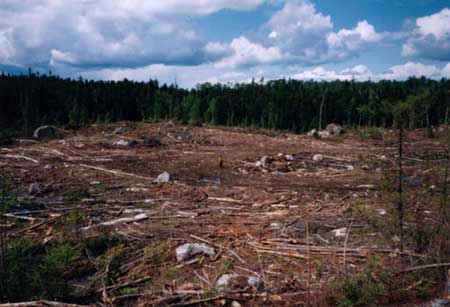As an example, New England College (NEC) installed a new system using the renewable resources of solar and biomass, combining the two to make a joint heating apparatus for their science building. The water that would be used to heat the building and supply hot water would be preheated in a tank attached to a solar water heater, thereby increasing the already renewable biomass burner (New England College).
Specifically the boiler's stats would be:
- potentially produce up to 1,000,000 BTU/h (British Thermal Unit {~1000 Joules}/ hour)
- one ton of wood pellets holds the same energy potential as 120 gallons heating oil
- each full silo of pellets (36 tons) offsets 54 tons of CO2 output
- wood pellets have an efficiency ration of 12:1 over fossil fuels
(retrieved from:http://www.nec.edu/images/academics/general/sustainability/Conceptual%20Diagram.jpg/image)
This would be the best case scenario of combining renewable resources, and it comes from a college campus. The efficiency ration would be improved by the solar water heater, but still requires tons upon tons of wood-chips that have to be harvested from the environment. Even though this is a large improvement over fossil fuels, biomass may not be the answer to renewable heating that most people are looking for.
So, instead of saving money, they could in turn cost more money because biomass is getting harder to find with people wanting to conserve their land rather than clear cut it for fuels. This was an idea we had, but quickly realized that it might not be a good form of saving money. Below is a picture of the McNeil power plant here in Burlington that uses wood chips and logs to generate power.

(Retrieved from: http://vtdigger.org/vtdNewsMachine/wp-content/uploads/2011/03/20110305_mcneil.jpg)
And below is what a piece of land might look like in order to keep the wood flowing into a plant like this.

(Retrieved from: http://www.grinningplanet.com/2005/05-03/boreal_clearcut-copyright1.jpg)
See NRG-Consultants.com for detailed information and video of how large scale plants like this work to produce energy for smaller communities.
Biomass has potential, and is technically renewable since trees can be regrown, but the rate at which this country currently uses energy it would not be feasible to try and regrow trees solely for use in biomass. Both solar and wind power are more feasible and do not directly negatively effect the environment as much as biomass harvesting. So because of what this operation does to the environment, we decided that it wouldn't really be a good idea for us to include in our plan for saving energy here on campus.

No comments:
Post a Comment